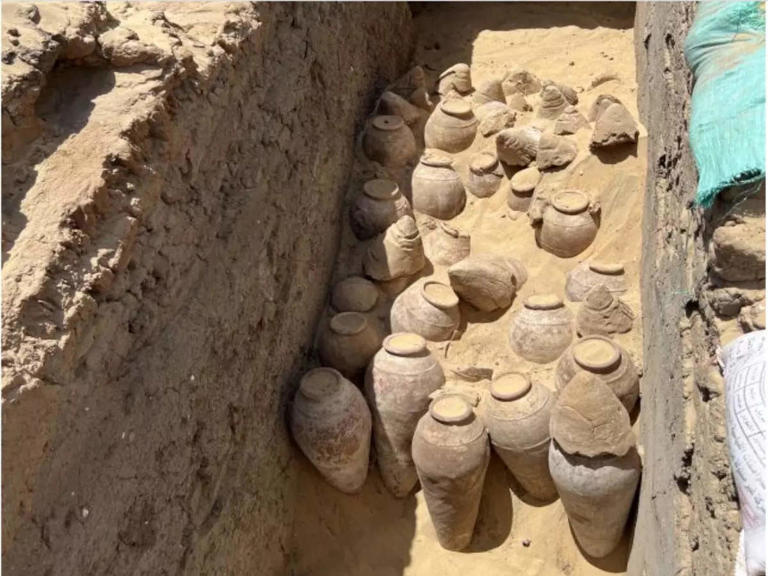Archaeologists have made an exciting discovery in the tomb of the first dynasty Egyptian queen Meret-Neith. They found a collection of valuable grave goods, including numerous large wine jars, some of which are still sealed. This discovery highlights Meret-Neith’s significant status, possibly even suggesting that she was the first female pharaoh of Egypt.
Meret-Neith lived around 5,000 years ago and reigned around 2950 BCE. She is believed to have been a queen-consort and regent, but her exact role as a ruler or pharaoh remains uncertain. Historically, Sobekneferu is recognized as the first queen to fully assume the royal titulary, although she lived a thousand years later.
Importance of Meret-Neith’s Tomb
The tomb of Meret-Neith, located in the royal necropolis of Abydos, provides strong evidence of her importance. She was buried among male pharaohs, and her tomb was both opulent and large. Experts believe this indicates she was likely the most influential woman of her era.
An international team of archaeologists, led by Christiana Kohler from the University of Vienna, worked with the Egyptian Ministry of Tourism and Antiquities to study this grand monument, which served as Meret-Neith’s final resting place.
Significant Findings
In addition to the wine jars, archaeologists found grape seeds and remnants of the wine the jars once contained. Inscriptions were also uncovered, showing Meret-Neith’s involvement in key royal offices such as the royal treasury. These findings further highlight the queen’s significance.
Construction of the Tomb
Researchers used advanced archaeological technologies to better understand how the burial monument was constructed. The complex, made with unbaked brick, clay, and wood, also contained the tombs of 41 servants and courtiers buried alongside the queen.
The analysis revealed that the monument was built in multiple stages over a long period. This suggests that the burial companions may not have been ritually sacrificed but were instead honored by being laid to rest with the queen after their natural deaths.
Continuing Efforts
Efforts to learn more about this enigmatic queen continue, as her story captivates us even millennia after her passing. The discovery of the wine jars has particularly excited researchers and offers new insights into ancient Egyptian history.

